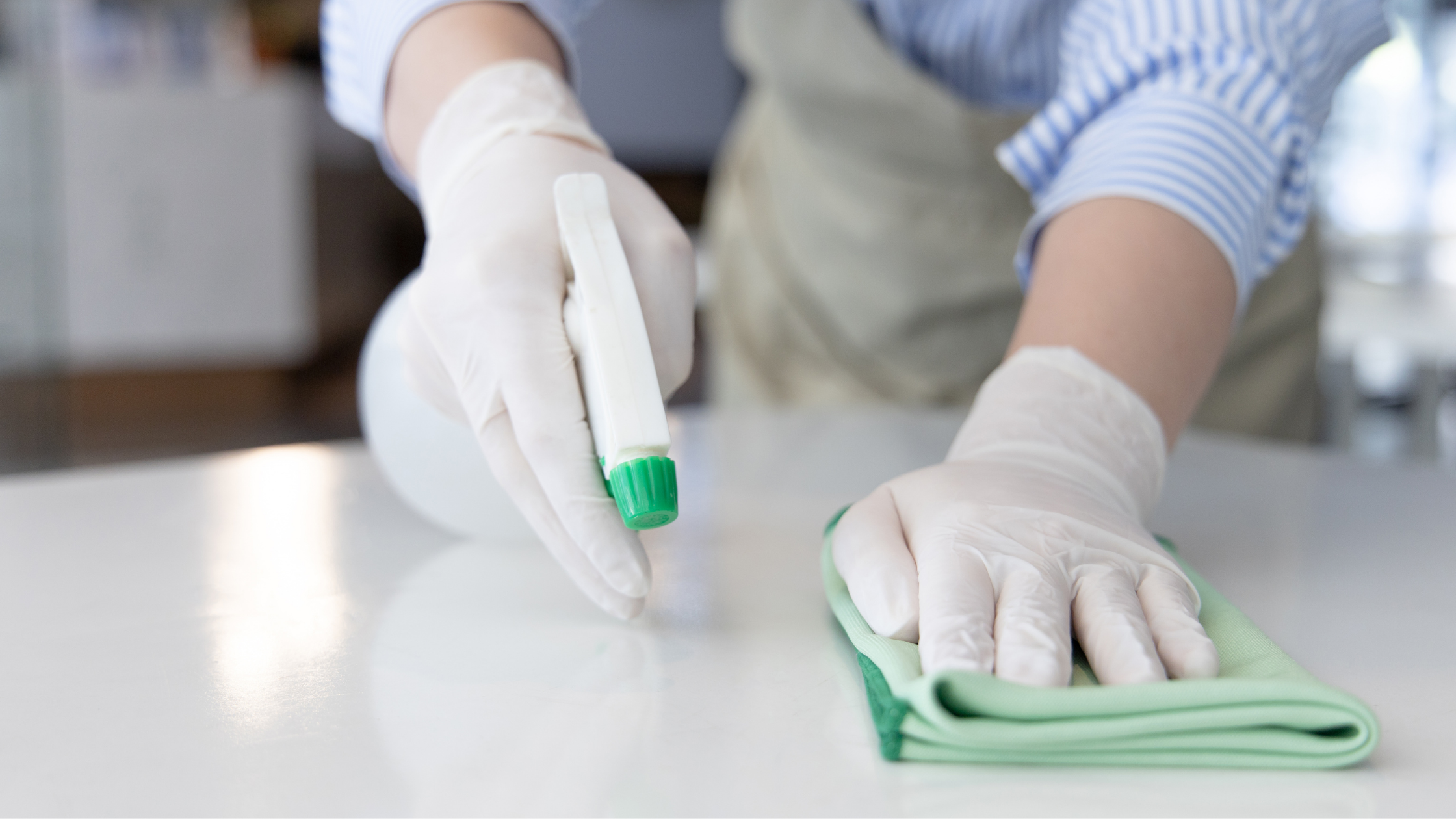For months, businesses around the world have been eagerly shifting into “post-pandemic” life and trying to return to some kind of ‘normal’. However, today, a complete return to the way things used to be is looking less and less likely. Some experts are beginning to advocate a “live with it” approach to COVID, implying that, even after the worst of the pandemic is long behind us, there will continue to be outbreaks here and there for the foreseeable future.
But forget COVID for a minute. If the pandemic has taught us anything, it’s that having proper infection prevention protocols in place ahead of time is necessary to handle any outbreak—whether it’s a scary new virus or the common cold. If you want to keep your employees, customers and whoever else enters your place of business safe, there will always be a need to mitigate and prevent the growth of viruses, bacteria, and fungi. Your local bar or beauty salon or arena or dental office could be affected by an outbreak of the flu, whooping cough, or whatever infectious disease happens to be making the rounds through your community. That’s why, as the Germ Girl, my #1 piece of advice to you is to keep taking germs seriously and design your cleaning protocol accordingly, now and in the future.
The international cleaning industry association ISSA and its Global Biorisk Advisory Council®(GBAC) advocate something they refer to as “confidence cleaning.” This
process starts with risk assessment, after which all the necessary steps for cleaning and, if necessary, disinfection, are performed. All cleaning staff must be properly trained on each of those steps, how often they will be performed, what tools should be used, and what personal protective equipment (PPE) is necessary. Because this process is completely open and transparent, the idea is that it should inspire “confidence” in your staff and customers that your workplace is safe, hence the name “confidence cleaning.”
Of course, if known cases of COVID or another infectious disease happen at your facility, you will likely need to do more than your regular cleaning protocol. Your cleaning professional should know what level of cleaning is appropriate to handle the exposure and keep your facility safe and germ-free.
Understanding Levels of Cleaning
Knowing the difference between the different “levels of cleaning” will help ensure that you get exactly the type of cleaning you need for the specific issues affecting your workspace or facility. Not every type of facility needs every type of cleaning, which the International Sanitary and Supply Association (ISSA) divides into four primary categories:
1. Cleaning
Cleaning is essentially the removal of dirt from surfaces—getting food off the floor, getting blood off a bedrail, things like that. Vacuuming carpets, sweeping floors, dusting furniture, and wiping off countertops all constitute cleaning. On its own, cleaning helps your place of business look, smell, and even feel its best, and can even remove up to 90% of germs. However, when it comes to infection prevention, especially in the post-
pandemic era, cleaning alone is not enough to actually make your space safe. For that, you need to add…
2. Sanitizing
Sanitizing is the next level up from cleaning and lowers the number of germs on a surface to a “safe” level in most circumstances. It doesn’t completely eradicate these microbes, but it reduces them significantly. Even before COVID, sanitization was standard in a lot of professional settings, like restaurants and retail establishments, where people are regularly exposed to more germs. Sanitization can be accomplished through heat or chemicals, and since it is gentler than disinfecting, it is not the strongest weapon against germs. In fact, sanitization alone may not be enough to eradicate the COVID-19 virus. For that, we move up to the next level…
3. Disinfecting
Disinfecting is the chemical process of killing germs—usually by applying some sort of spray or liquid solution to them. It will eliminate all or almost all bacteria, fungi, or viruses, except bacterial spores. This is the highest level of cleaning required; however, if the complete and total annihilation of any and all microbial life is necessary, there is an even higher level of cleaning available…
4. Sterilization
Sterilization completely eliminates any and all forms of microbial life, including bacteria, viruses, and fungi. This can be accomplished through physical methods like radiation, steam, or dry heat, as well as through strong chemicals. While this is obviously the gold
standard in infection prevention, it is not necessary for most types of facilities and is usually reserved for highly specialized environments, like surgical suites and certain research and development labs.
One way to make sure you’re getting the right level of cleaning for your facility is to ask the right questions. For example:
- Ask your cleaning provider what products and methods they are using and ensure they are the best fit for your facility’s needs.
- Ask if these products and/or methods are registered or certified appropriate for the use being suggested.
- Ask for safety data on the product or method along with written usage instructions from the manufacturer to avoid improper use that could harm your surface, your people, or your cleaning staff.
- Check to make sure if a chemical is safe to be used in an occupied area and ensure you have proper ventilation for the proposed cleaning technique.
- Always make sure any efficacy claims are in writing and ask for proof any cleaners working in your facility have been properly trained.
Stay aware and informed when it comes to the level of cleaning you need to keep your facility safe from germs, and you and your business should be able to weather any coming COVID storms, as well as the next pandemic, with relative ease—and have a healthier workplace no matter what’s going on in the outside world.

